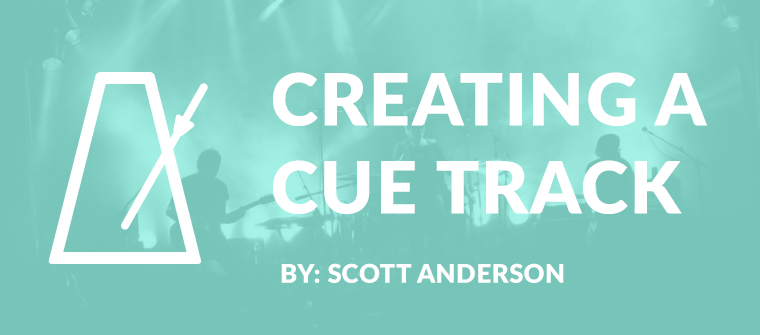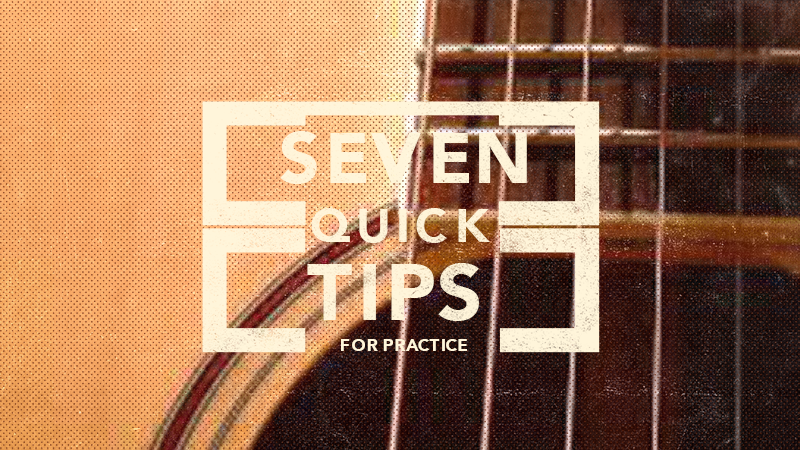Creating a Cue / Guide Track for Worship

INTRO, 2, 3, 4!
Do you love a good band cue? As a musician, nothing puts me more at ease than to know exactly what is expected of me and when. If you don’t use one, learning to use, and even make, a cue track might be a great next step for your team. It helps your band stay together and you don’t have to worry about if your drummer will remember to go back to the chorus after the second verse.
As great as the cue track is, it is often simply that. A track of band cues. It doesn’t often convey emotion or give the exact guidance that can really help your band hit the right marks with the right emphasis, delivering the performance you intended. But I believe they can.
Whether I am working on a new track for my church, for Loop Community, or for a client, the first thing I do is create cues for the musicians. I believe that a good cue track does amazing things for a band. It helps the musicians take the journey of the song. It is a reminder to musicians about what to play, when to play it, and even how you would like it played.
A generic cue track might include cues that say “BRIDGE, 2, 3, 4!” or “Intro repeats twice.” These are very helpful and everyone should use them, but I like to take it a step further. My cue track will include specifics, for example, “BRIDGE, drums go to half time, bass on the quarter and 3, 4!” or “Get ready for the cut on 4, then just piano.”
On bridges that repeat several times, I will use the cue track to walk the band through the progression. The first time we sing it they may hear, “First time through, just guitar.” The second time through, “Now start a soft groove!” or “Everybody on the quarter.” The final time I might say something like, “Get huge going into the last Chorus!”
I also use these cues to remind players when they are to play and when they are not to play. We all know that drummer that will find a way to get one more cymbal hit or verse groove in when the moment in the song is supposed to be driven by something else. I will add reminders into my cues: “Drums out for first half of verse” or “Everybody out on beat 3. 1, 2, we’re out!”
I often get very animated in my cues. There are times when I need to show that I want high energy in the song, and times when I want it mellowed out. If all my cues sound the same, this may not come across. This emotion and guidance from the cues takes the guesswork out for the band. It allows the musician to really play their part, be in the moment, and not wonder if this is the chorus they are supposed to sit out on.
So, how do you go about recording your own cue track? First, import the track that you just purchased from LoopCommunity.com into any DAW. Next, hook up a microphone and talk your way through the song. I encourage you to keep your comments to necessary cues. You don’t want to clutter up the song with audio or have the cues be a distraction. Don’t forget to include emotion! Take the guesswork out for your musicians. Once you get the cues you recorded on the timeline of your song, re-export the cue track with the rest of your tracks, and load them into your PRIME account. I love what Loop Community has done with PRIME and how simple it is to use for running tracks.
If you take the time to make a cue track for your team, even for just one song that they are having trouble with, I promise you will see a difference in how your band plays the songs. This will speed up rehearsals and provide a level of comfort to your team. END, 2, 3, 4!
Click play to listen to one of Scott’s Cue Tracks!
Scott Anderson
Scott is a Loop Community Producer and leads worship at Cascade Community Church in Seattle, WA. He owns and runs 57th Street Productions Recording Studio, where he is a composer. You can check out all of Scott’s tracks at http://loopcommunity.com/scott_anderson.


3 Comments
Brandon · February 20, 2018 at 12:10 pm
Dude…super great advice! I didn’t realize I was putting myself in a box with my simple band cues. Thanks for helping me “get out”.
Alfonso · April 14, 2019 at 1:08 am
Hello. I make my own backing tracks, click and cues. I have 3 separated STEM tracks for them. As per instructed in the website I upload it to loop cloud. But my problem is when I upload my tracks to my app. The backing track, and cues (misplaced) are in the blue section and my click correctly placed in the click channel/section.
Loop Community · April 17, 2019 at 1:29 pm
Hi Alfonso, when you upload tracks make sure that the Click and Cues/Guide tracks are labeled CLICK and CUES on the site when you upload them. This will put them in the Red Fader section so they are panned to the left.